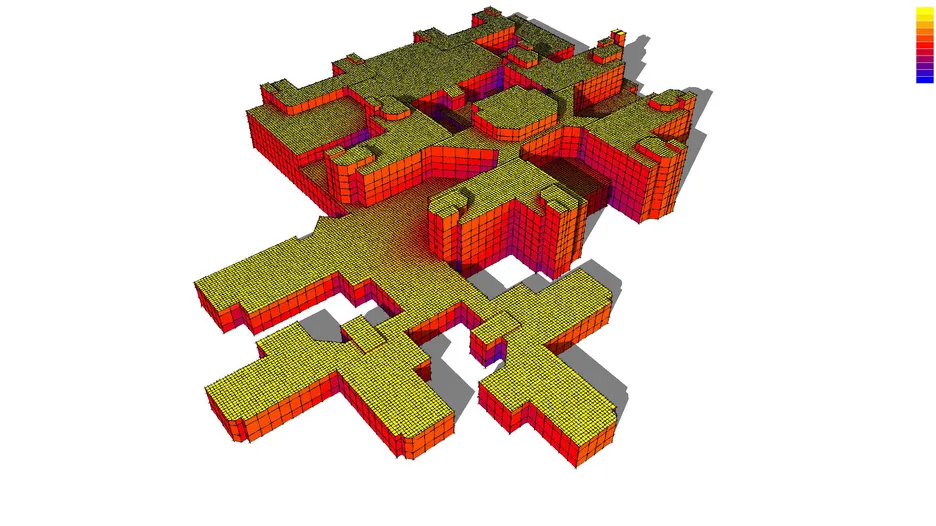Ingolstadt Hospital – Power Generating Façade

Project partners
Yunming Shao,M.Sc.
Prof.Dr.-Ing.Tina Wolf
Dipl.Ing. Philipp Molter
Summary
Hospitals are buildings with exceedingly high energy requirements. It is therefore particularly expedient to use decentralized power generation in their façades and roofs to cover their energy demands. For this reason, as a first step Ingolstadt Hospital (Klinikum Ingolstadt GmbH) has commissioned a study to investigate the potential of these types of renewable energy. Aspects of interest include both increasing the sustainability of the hospital, which was built in the 1970s and already featured state-of-the-art technologies for that time, as well as increasing the economic benefits and security of the energy supply. According to the study, implementation is planned if sufficient potential is evidenced. The foundations of the study as well as a three-dimensional model to determine radiation potentials and initial simulations have been carried out. Furthermore, additional simulations to precisely determine the energy requirements and technical design concepts for the integration of solar thermal and photovoltaic technologies are being prepared.
The aim is to determine the potential energy yield of the use of solar collectors in the façade with consideration given to the actual demand of the hospital. Important questions include the respective shares of solar thermal technology and photovoltaics as well as the geometric arrangement of the panels to best meet the energy requirements. Optimal solutions in terms of energy, investment costs and operating cost savings will be proposed.
Work will begin by geometrically and temporally ascertaining the radiation potentials on the façade. The next step will analyse the energy requirement and the demand profile based on a simulation of example rooms. The resulting data will form the basis for technical and design proposals for the integration of the system. On the basis of these concepts, the efficiency will be estimated and the energy yield and cost-effectiveness of the system will be determined.